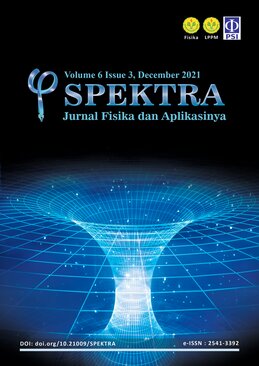DETECTION AND MONITORING SYSTEM ON THE PACKAGE RECEIVING BOX
DOI:
https://doi.org/10.21009/SPEKTRA.063.02Keywords:
pandemic, security, sensor load cell, Blynk-applicationAbstract
The package delivery system during this pandemic period require concerned health protocols. Receiving packages sometimes needs to be done even though there is no recipient. Here, the box for receiving goods has an important role. The goods receiving box must have security and ensure that the goods are received/placed in the box. In this case, it is necessary to detect the presence of objects in the box using a weight sensor, and a box locking motor is also needed. A push-button is needed when the package items are put into the box. The process of this activity can be monitored directly with the help of the Blynk application from a smartphone. The tests are carried out, and the push button signals to open the box. The weight sensor detects weight changes. The Blynk application will inform the smartphone that the object has been placed in the box from the weight change, and the system will lock the box again. The detection and monitoring system for goods on the box can work well.
References
[2] J. Jiang, H. Wang, X. Mu and S. Guan, “Logistics industry monitoring system based on wireless sensor network platform,” Computer Communications, vol. 155. pp. 58-65. Apr. 2020. 10.1016/j.comcom.2020.03.016.
[3] B. Kuswandi et al., “Smart packaging: sensors for monitoring of food quality and safety,” Sensing and instrumentation for food quality and safety, vol. 5. no. 3-4. pp. 137-146. Nov. 2011. 10.1007/s11694-011-9120-x.
[4] M. A. C. Purio et al., “Development of the system and method for delivery using Radio Frequency Identification (I-BOX)”.
[5] R. Arabelli et al., “A Novel Method to Monitor and Alert System for A Letter Box”.
[6] J. K. Ahuluwalia and U. Khanna, “New technique for increasing security management using Internet of Things (IOT) application”.
[7] W. Wang et al., “Cost-Effective Wireless Sensors for Detection of Package Opening and Tampering,” IEEE access, vol. 8. pp. 117122-117132. Jan. 2020. 10.1109/access.2020.3004438.
[8] R. Suwartika and G. Sembada, “Perancangan Sistem Keamanan Menggunakan Solenoid Door Lock Berbasis Arduino Uno pada Pintu Laboratorium di PT. XYZ,” Jurnal E-Komtek, vol. 4. no. 1. pp. 62-74. Jun. 2020. 10.37339/e-komtek.v4i1.217.
[9] R. O. Dwiansyah and D. A. Prasetya, “Smart Home System With Radio Frequency Using Blynk Application,” Emitor (Surakarta), vol. 22. no. 2. pp. 177-184. Aug. 2022. 10.23917/emitor.v22i2.17359.
[10] Y. Prabowo, G. Purwanto and A. H. Nudin, “Prototype Of Feeding Control System, Automatic Harvest Using Blynk Application Based On Arduino Uno R3 Microcontroller And Nodemcu”.
Downloads
Published
How to Cite
Issue
Section
License
SPEKTRA: Jurnal Fisika dan Aplikasinya allow the author(s) to hold the copyright without restrictions and allow the author(s) to retain publishing rights without restrictions. SPEKTRA: Jurnal Fisika dan Aplikasinya CC-BY or an equivalent license as the optimal license for the publication, distribution, use, and reuse of scholarly work. In developing strategy and setting priorities, SPEKTRA: Jurnal Fisika dan Aplikasinya recognize that free access is better than priced access, libre access is better than free access, and libre under CC-BY or the equivalent is better than libre under more restrictive open licenses. We should achieve what we can when we can. We should not delay achieving free in order to achieve libre, and we should not stop with free when we can achieve libre.
 SPEKTRA: Jurnal Fisika dan Aplikasinya is licensed under a Creative Commons Attribution 4.0 International License.
SPEKTRA: Jurnal Fisika dan Aplikasinya is licensed under a Creative Commons Attribution 4.0 International License.
You are free to:
Share - copy and redistribute the material in any medium or format
Adapt - remix, transform, and build upon the material for any purpose, even commercially.
The licensor cannot revoke these freedoms as long as you follow the license terms.

 E-ISSN 2541-3392
E-ISSN 2541-3392  Focus & Scope
Focus & Scope  Editorial Team
Editorial Team  Reviewer Team
Reviewer Team  Author Guidelines
Author Guidelines  Article Template
Article Template  Author Fee
Author Fee  Publication Ethics
Publication Ethics  Plagiarism Policy
Plagiarism Policy  Open Access Policy
Open Access Policy  Peer Review Process
Peer Review Process  Retraction & Correction
Retraction & Correction  Licensing & Copyright
Licensing & Copyright  Archiving & Repository
Archiving & Repository  Contact
Contact  Mendeley
Mendeley 

